Perennial plants are the mainstay of Midwest gardens. With so many varieties and styles to suit any landscape design – color, form and function are good guidelines. As Midwest gardeners “spring” into action, here are six plants that check all the boxes. For details about all of Loma Vista Nursery’s offerings, visit the online catalog.
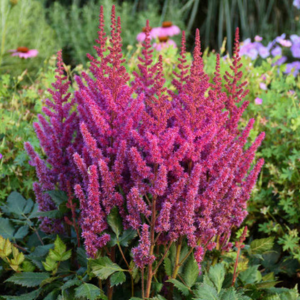
‘Visions’ Chinese Astilbe (Astilbe chinensis) – Photo courtesy of Proven Winners
Visions Astilbe
Raspberry plumes thrill the eye when Visions Astilbe produces its flowers in midsummer. This long-lived perennial calls forth the bees while deer and rabbits find it not-so-palatable. Dense green foliage forms the base of its upright habit. Plant en masse for a color “wow.” This plant is perfect in a perennial border and in containers. Include it in a cutting garden for in-home vases, then dry the plumes for year-round enjoyment.
Visions Astilbe is easy to grow but gets thirsty fast. Be sure its rich soil is consistently moist. This plant is 14 inches tall at maturity; 16 inches when in flower. Its spread is between 12 and 15 inches. Plant in light shade to filtered sun in USDA Hardiness Zones 4 to 9.
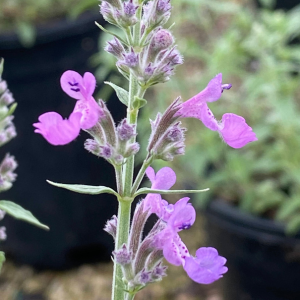
Little Trudy® Catmint (Nepeta x ‘Psfike’)
Little Trudy® Catmint
If you’re planning – or adding to – a pollinator garden this season, consider including Little Trudy® Catmint. Bees and butterflies love it – and its long blooming season, too. This herbaceous perennial is low growing, so use it as ground cover, in mixed borders or as edging in an herb garden.
Little Trudy® Catmint grows 8 to 10 inches tall and about 1 to 1½ feet wide. It prefers soil that is well drained. Provide new plants with regular moisture until roots are established. Cut spent flowers to prolong bloom from spring through fall. Plant this catmint in part sun to full sun. Best in USDA Hardiness Zones 4 to 9.
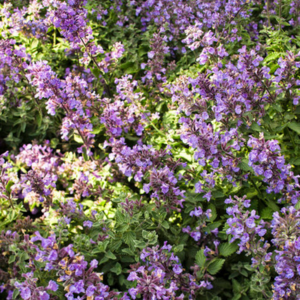
‘Cat’s Meow’ Catmint (Nepeta faassenii) – Photo courtesy of Proven Winners
‘Cat’s Meow’ Catmint
A uniform grower with dense, colorful flowers and a refined habit, ‘Cat’s Meow’ Catmint is a fragrant, continuous rebloomer that is heat and drought tolerant. Perfect in the pollinator garden, this Nepeta attracts bees, butterflies and hummingbirds and is deer and rabbit resistant.
Cat’s Meow grows to about 2 feet tall at maturity and has a 3-foot spread. Flowers bloom from early summer through early fall. Shear this Nepeta back to encourage rebloom. Plant in sun, in USDA Hardiness Zones 3 to 8.

First Frost Hosta (Hosta ‘First Frost’)
First Frost Hosta
First Frost Hosta features rich, deep blue-green foliage edged in gold in spring. Edging transitions to white in summer and holds its color through fall. Pastel purple flowers appear on long, sturdy stems above the foliage in midsummer. The flowers attract hummingbirds and pollinators. First Frost Hosta adds color and texture to perennial beds. Use it as edging in front of larger perennials and ornamental grasses. Include it as filler in containers and plant in shady areas of the landscape that need “something extra.”
First Frost Hosta is cold hardy and prefers well-drained soil. Mulch the plant to provide aeration and hold moisture. Prune late in the fall and divide the plant every two to three years. This hosta has a mature height of 12 inches; 15 inches when in flower. Plant in partial to full shade, in USDA Hardiness Zones 3 to 9.
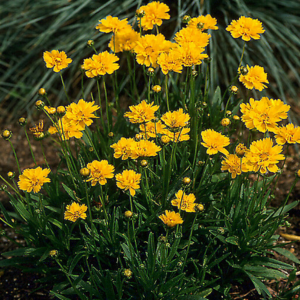
Early Sunrise Coreopsis (Coreopsis grandiflora ‘Early Sunrise’) – Photo courtesy of Proven Winners
Early Sunrise Coreopsis
With sunny-yellow double flowers that attract butterflies, Early Sunrise Coreopsis offers a cheery welcome when planted along front-door sidewalks and as a thriller in entryway containers. Cut the flowers from this landscape plant and use it as part of in-home arrangements.
Heat and drought tolerant, this perennial only looks delicate. Deep-green foliage provides contrast to the yellow florals as part of an upright habit that does not flop. Early Sunrise Coreopsis is 1½ to 2 feet tall at maturity and has a similar spread. Bloom-time is early summer through late spring. Once flowers begin to die back, shear the plant to promote re-bloom. Plant in sun, in USDA Hardiness Zones 3 to 9.
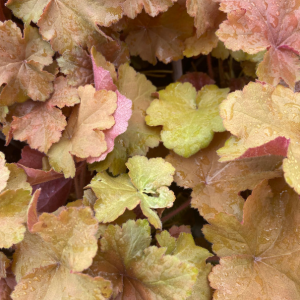
Caramel Heuchera (Heuchera x ‘Caramel’)
Caramel Heuchera
This coral bell cultivar has us thinking of candy apples! In spring, foliage emerges in contrasting colors of beige, sage green, pink-red and “caramel.” True to its name, Caramel Heuchera adds warmth to front-of-the-border perennial beds and provides interesting texture alone or as filler in containers. Pair it with ‘Visions’ Chinese Astilbe (above) for fun color contrast.
This herbaceous perennial is very tolerant of heat and humidity but prefers part-shade in areas with hot summers. Be mindful not to bury the crown when planting. Caramel Heuchera appreciates mulch-enriched, well-drained soil. Provide moisture when the top 2 inches of soil is dry. This plant matures at 1 foot tall and 1½ feet wide. Plant in part shade to full sun, in USDA Hardiness Zones 4 to 9.
Learn More About Landscape Plants from Loma Vista Nursery
Loma Vista Nursery’s staff members are experts in the field. We love helping people learn about healthy plants that perform well in Midwest landscapes. For more information about trees, shrubs and perennial plants that are ideal for Midwest landscapes, visit our plant catalog. To get answers to your plant-related questions, feel free to email us at sales@lomavistanursery.com or call us at (785) 229-7200.
Connect With Us
Stay up to date on our plant recommendations, growing tips and more by following us on social media.
